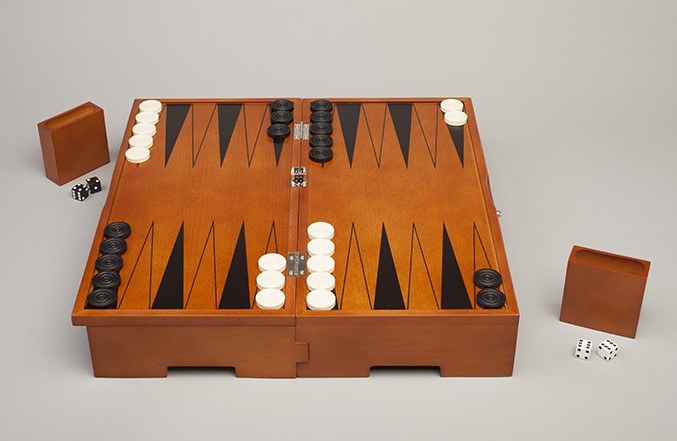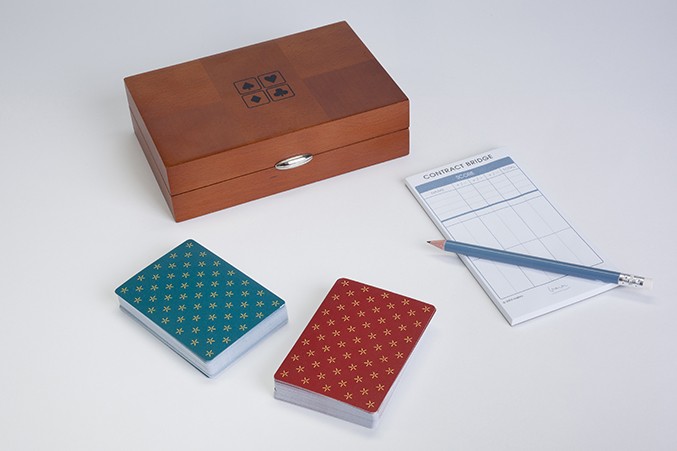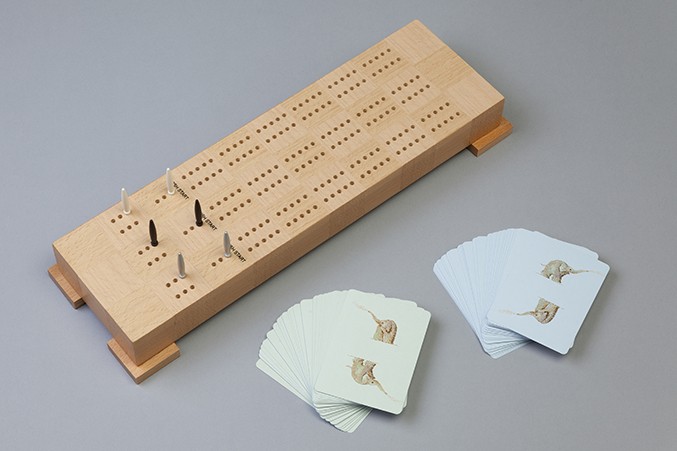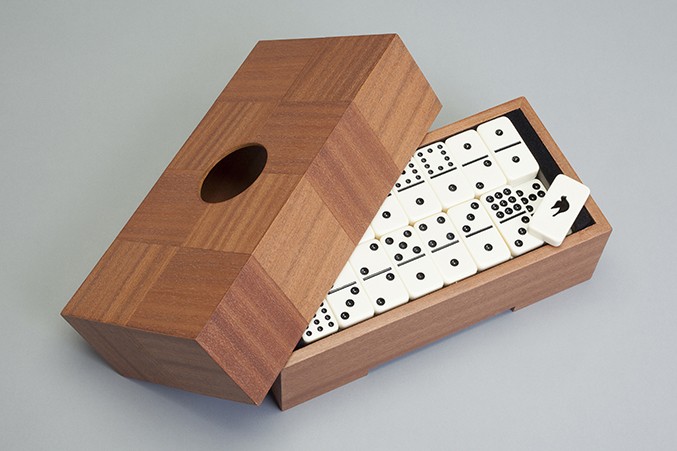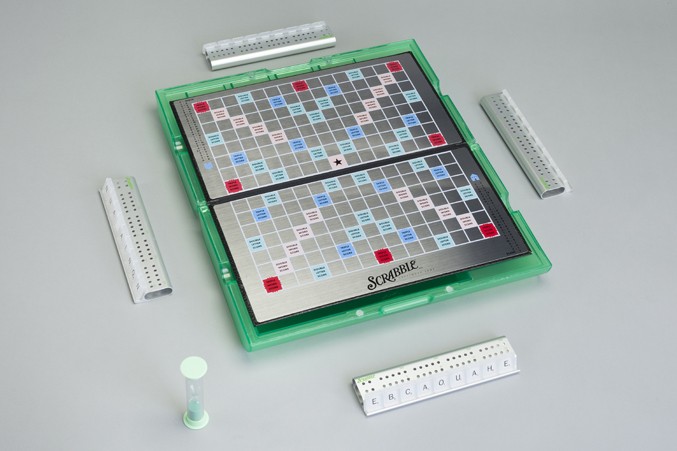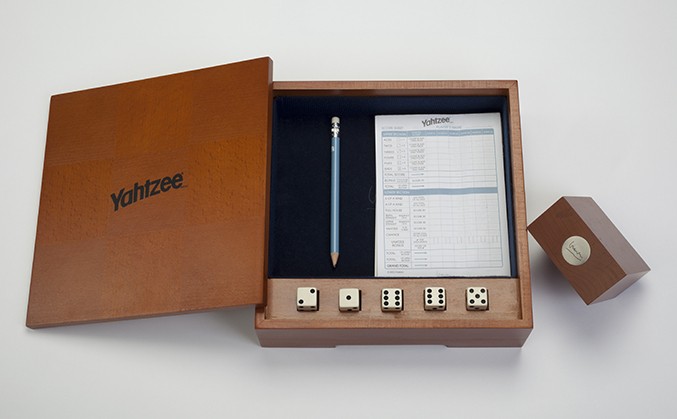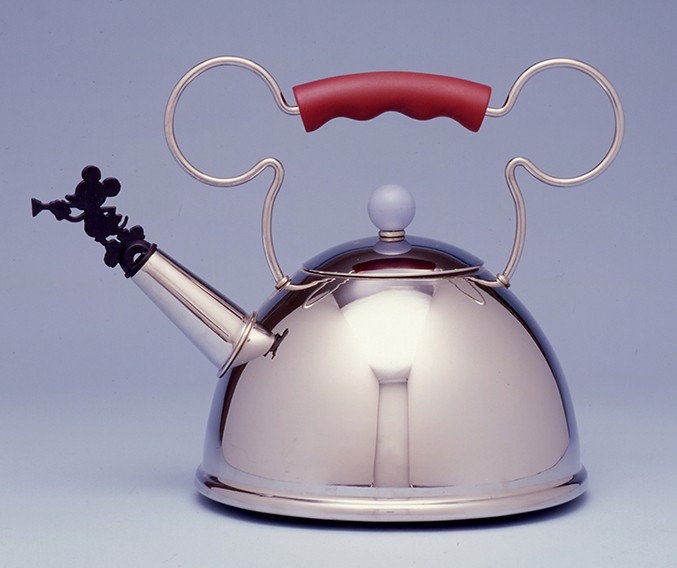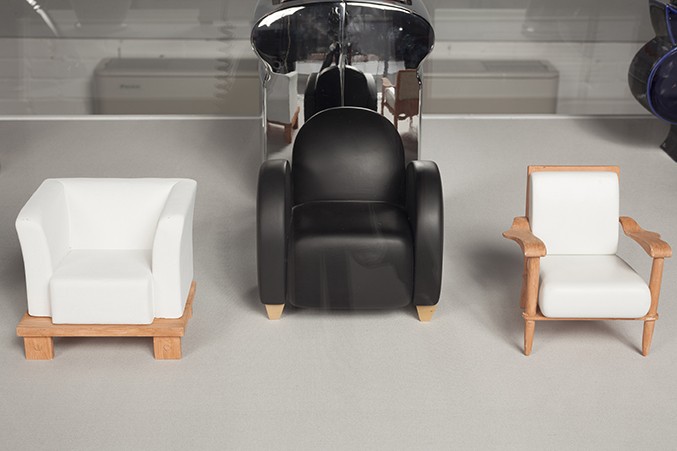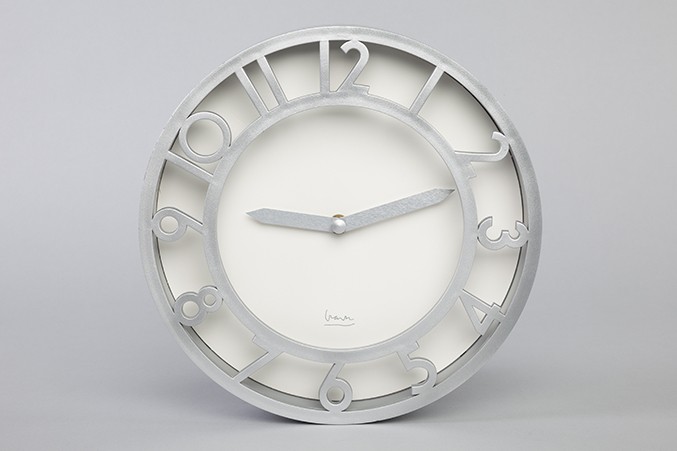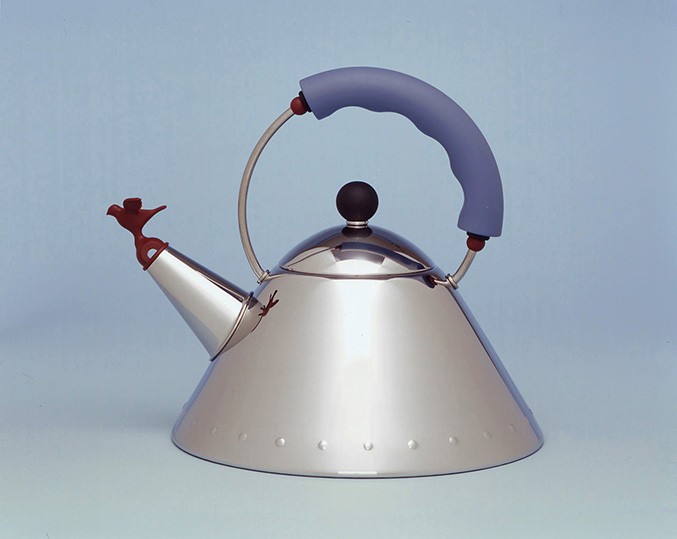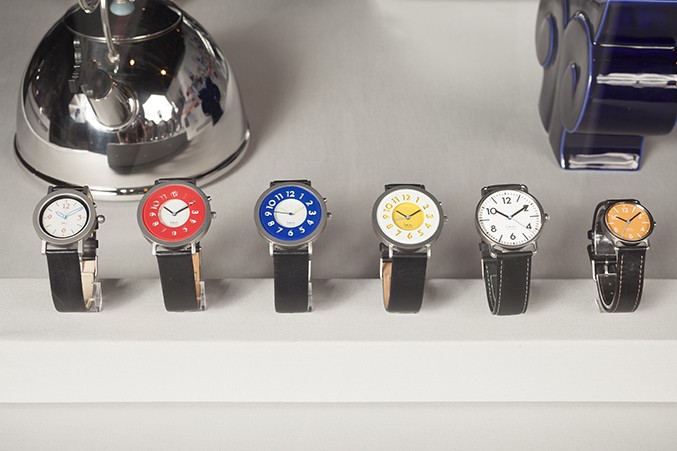Strategy by Design: Games by Michael Graves focuses on the games designed by the Michael Graves Design Group.
On View: May 8 - September 28, 2014
Part of the line of housewares, decorative accessories, and furnishings created for the Target Corporation (now sold exclusively by JCPenney), these games bear the inimitable Graves stamp in their sleek and sophisticated design. While the exhibition features such games as Scrabble, Monopoly, Poker, and Stratego, the central element is the chess set, which is complemented by materials used in the design and creation of the set loaned by the Michael Graves Design Group. The exhibition provides further contextual foundation for Graves’ historical significance through additional examples of product design. For educational purposes, the exhibition also includes video elements that provide additional context for Michael Graves’ work and career, and an education center featuring books and other materials that provide supplementary historical background.

By the time a chess set designed by Michael Graves first appeared on the shelves of Target stores in 2000, its creator’s name was already synonymous with innovation in architecture and design in the twentieth century. One of the vaunted New York Five group of modernist architects based in New York City in the late 1960s, Graves later rejected the stringent efficiency and severity of modernism for the witty eclecticism and formal freedom of postmodernism, an architectural style he was amongst the first to introduce into the American landscape. His Portland Building has been considered one of the most groundbreaking and controversial examples of the postmodern architectural aesthetic since its completion in 1982, and his iconic Humana Building in downtown Louisville, Kentucky, and the Walt Disney World Dolphin and Swan Hotels are listed among the American Institute of Architects’ 150 top buildings in the United States. The number of awards, accolades, and honorary doctorates Graves has received over the course of his lengthy and consistently productive career is truly staggering. The 2001 Gold Medal of the American Institute of Architects (the highest award that it bestows upon individual architects) and the 1999 National Medal of Arts from President Bill Clinton top the list of over 200 regional, national, and international awards bestowed upon Graves and his two firms, Michael Graves & Associates and Michael Graves Design Group. Rounding this out with a thirty-nine year career as a full-time tenured professor at Princeton, it can be said that Graves’ full impact on architecture and design at the turn of the century is virtually immeasurable.
While Graves has designed a number of extraordinary homes during his more than fifty years in the architectural field, his impact inside the home has been similarly influential, as he boasts some of the most recognizable domestic product designs of the past thirty years. Reflecting the philosophies of such venerable early twentieth-century exemplars as the Austrian Wiener Werkstätte, a visual arts collective who maintained the value of craftsmanship in the face of emerging industry, and the German design school the Bauhaus, whose aesthetic vision embraced both beauty and utility, Graves recognizes that modern industrial manufacturing processes did not signal the end of elegant, stylish design, but rather created a new potential for bringing a more sophisticated, relevant design aesthetic to the middle class. Graves’ reputation as a designer of stylish household products geared toward a more modest budget can be traced back to his work with the Italian firm Alessi that began in the 1980s. This partnership yielded what would become Graves’ most iconic design as well as Alessi’s most popular product, the whistling bird teakettle, with over two million sold since its debut in 1985. While his work with Alessi was a crucial step in the development of his design practice, it was his through his commission for the two hotels at Walt Disney World in the late 1980s that Graves saw the potential for a total thematic vision come to fruition. In these hotels, the extent of Graves’ aesthetic reached beyond the buildings into the furnishings, fabrics, wallpapers, and even the dishware. By the early 1990s, the growth of Graves’ design enterprise necessitated the establishment of a separate department of design within his architectural firm, which would ultimately develop into a firm in its own right, Michael Graves Design Group.
Graves’ affiliations with Alessi and Disney were but a prelude to his most ambitious and wide-reaching collaboration, one which would change the face of mass-merchandising retail in America. In 1997, the leading sponsor of the renovation of the Washington Monument, the Target Corporation, approached Graves seeking a designer to create an inventive and visually attractive scaffold system for the project. This relationship would spawn a massive, fifteen-year campaign of design collaboration that resulted in over 2,000 Graves-designed products, sold exclusively at Target stores, addressing virtually every facet of the domestic living space. Not only was the Graves association massively successful for Target, it has vastly altered the public perception of product lines introduced by “big box stores,” with partnerships between world-class designers and discount retailers now an everyday occurrence. “I’m as proud of these objects as of anything I’ve ever done,” Graves said of his Target products. “Everything has a budget. In architecture, it’s the difference between stucco and marble. In products, it’s maybe plastic instead of porcelain or glass. Or you can do a candy dish in silver for Tiffany and one in aluminum for Target. The design energy remains the same.” Following his separation from Target in 2012, Graves has embarked on a new partnership with JCPenney, offering a smaller range of products at a higher price point, but the objective remains the same: making good design affordable. “Allowing that democratization of design is the great design story of the late twentieth century,” asserts the distinguished architectural critic Paul Goldberger, “Michael is the only architect who has chosen to take a fully active role in that movement, not only participating, but shaping its direction.”

Michael Graves
Sketch for chessmen, 2000
Courtesy of Michael Graves Design Group
It was Graves’ own idea to design new versions of classic board games for Target, beginning in 2000 with the most iconic of them all: chess. According to Phil Patton, author of Michael Graves Designs: The Art of the Everyday Object, Graves had been eager to try to improve upon the utopian abstraction of Josef Hartwig’s famous Bauhaus Chess Set, which utilized a series of rigid geometric shapes that represent each piece’s respective moves on the board. Like Hartwig before him, Graves also sought out a geometric foundation for his design, but one with a decidedly more organic quality that also functioned as the thematic basis for his first line of products at Target: the egg. While eschewing Hartwig’s iconoclastic minimalism by paying homage to the traditional figurative attributes seen in such classic sets as the Staunton chessmen (evident in Graves’ crowned king and queen, the blocky, stylized mane of the knight, and the bulbous mitre of the bishop), there is still an idiosyncratic irreverence to these swollen yet noble combatants. Even in something as emblematic and lacking in practical utility as a chess piece, Graves’ irrepressible ingenuity still led him to identify the potential for functionality, as he noted that he has used the bishops as place-card holders for dinner parties. Along with the chess and checkers set in 2000, the initial series of Graves’ redesigned games included Monopoly® (for which he used his own product designs as the game pieces rather than the traditional ones), Stratego®, Scrabble®, and dominoes. As other Target product lines continued to grow, so too did the number of games, which expanded beyond board games into card games, puzzles, and other amusements. Many of these were also produced in chic travel editions featuring translucent plastic elements and shiny, reflective boards whose futuristic feel differs dramatically from the more traditional effect of the wooden cases and boards of their respective home versions. With the move to JCPenney, the number of games was substantially reduced, with subtle but significant changes in scale and materials that reflect the more upscale ambitions of this new partnership.
As this exhibition demonstrates, Graves’ games possess the same balance of functionality and flair that characterizes his architecture and his design aesthetic overall. “In designing everyday objects,” says Graves, “I want to encourage the impression of familiarity and also allow these objects to be seen in a slightly different way. Even useful objects can have symbolic function as well as a pragmatic one. In achieving these goals, we often combine simple utility, functional innovation, and formal beauty.”
—Bradley Bailey, associate professor of art history, Saint Louis University, 2014

